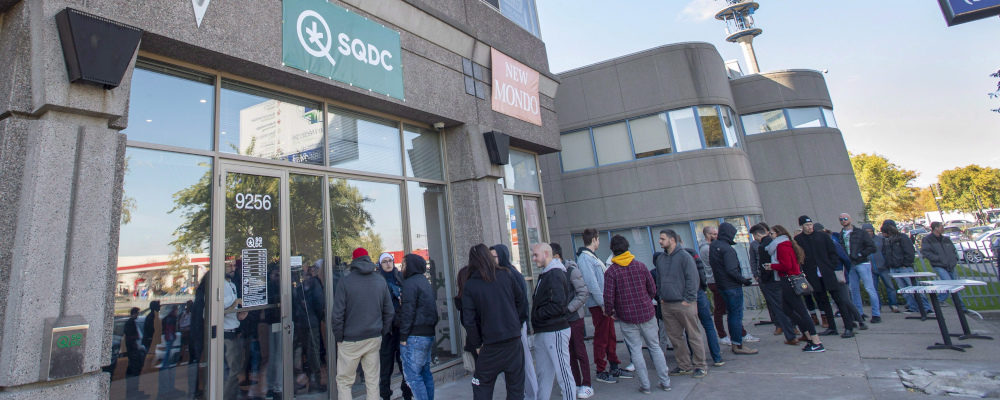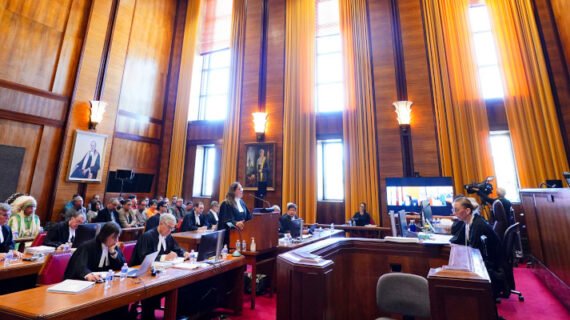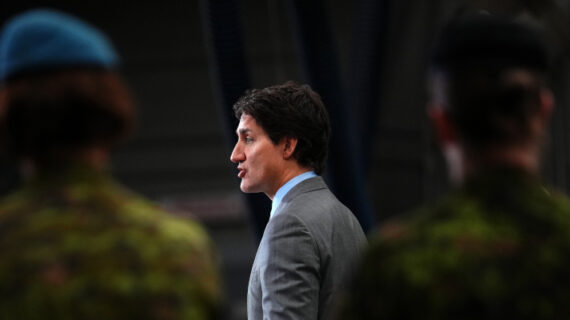The biggest risks with social policy reforms affecting millions of voters all at once — and a reason they rarely happen in peacetime democracies — is that voters’ attitudes get misjudged and the public revolts, or the implementation fails and the beneficiaries lose faith, or the roll-out takes too long and opponents get organized and reverse it before the change is embedded.
None of that happened with the Cannabis Act in Canada. This week marks three years since Bill C-45 received royal assent, so perhaps now is a good time to explore why.
The legalization itself was foreshadowed by an unambiguous platform pledge in 2015 by Prime Minister Justin Trudeau’s Liberal Party, which became an expert commission, which led to a parliamentary process of debate and revision.
MORE SIGNAL. LESS NOISE. THE HUB NEWSLETTER.
The authority of the expert taskforce certainly gave the government useful cover and also helped socialize the idea that this reform was going to happen and with good justification. But no country legalizes out of the blue. The gradual normalization of cannabis in Canada played an important role. Having had more than a decade of a regulated legal market for medicinal cannabis created a viable domestic industry with a legitimate business model.
With dozens of private companies as licensed producers serving tens of thousands of patients across the country who were treating their conditions with cannabis, cannabis itself was becoming a fact of life. Voters got to know more about it, and they personally knew people who had benefited from its use.
In addition, and contrary to the arguments of social justice activists, the police had been easing off pot enforcement for years — and when politicians in Ottawa openly started debating full legalization between 2015 and 2017, detected offences fell even further.
There was almost a decade of gradual de-policing of cannabis before Bill C-45 was passed, even as recorded offences for other drug crimes stayed flat or even increased. So the backdrop was pointing in one direction — cannabis was increasingly being accepted, and its use in the community openly tolerated. The high rates of reported use and low levels of enforcement set the stage: cannabis was condoned here before it was made legal.
However, the fast roll-out also gave the reform a good chance of overcoming opposition. It is remarkable how quickly the broad consensus that prohibition was not working led to a new status quo — from a lone election campaign pledge to the first legal sales in less than 36 months. Political historians will analyze to what extent the reform was inevitable, but through a contemporary lens, it is striking just how little opposition mobilized successfully against it.
One reason was that the proposal gave opponents and skeptics a real stake. In the Canadian federal tradition, the balance has worked out politically for all parties. The single criminal code has been amended, and all production is licensed and monitored exclusively by the federal government, but provinces still decide how, where and by what channel cannabis can be sold, and what minimum age consumers need to be; even municipalities can have a say about local retail.
The more conservative provinces have used this freedom to align the legalization with what their voters want and avoid getting ahead of public appetite for this new industry. In Quebec, they have restricted access to edible products, limited the spread of stores, and imposed a higher minimum age of 21.
On a per capita basis, for every government-run SQDC store in Quebec, there are 18 private retail stores in Alberta. The results mean that the experience of legalization depends largely on where you live. This variable approach has meant the Cannabis Act, despite looking like a risky Big Bang reform, in fact created a dozen mini-legalization experiments, and made the political reality primarily a local, provincial issue. This has de-risked the reform for Trudeau’s government and allowed the public to be kept broadly supportive.
Political historians will analyze to what extent the reform was inevitable, but through a contemporary lens, it is striking just how little opposition mobilized successfully against it.
Implementation of the policy relied on a good legislative framework, a well-resourced bureaucracy in Health Canada, and having the authorities, including the police, prepared for the law change. Responsibility for delivering retail stores and an efficient supply chain was shunted onto the provincial governments and has gone largely without a hitch. The tax regime is working to raise revenue, and from this year, three-quarters of the revenue from the federal excise duty on each legal gram of cannabis sold will go back to provinces to support their costs.
Only around impaired driving have there been difficulties, with no widespread roadside testing by police — hampered by both a lack of coverage and too few cops equipped with the authorized testing devices.
Clearly the implementation has not gone smoothly for everyone. The speculation and market manipulation that accompanied the early investing frenzy led to a dramatic crash in 2019 and will still claim some big corporate casualties before the market stabilizes.
Initial shortages and then a supply glut may have caused commercial disruption and collapsing stock prices, but major growing pains in a new legal industry are inevitable. Those who have made or lost money in this crowded and chaotic new industry all have their reasons to judge how it has played out, but the public has not been disappointed, and in political terms it has been relatively plain sailing. The consumer experience has improved every year since the launch, with more products, lower prices and better-quality cannabis for sale now than in 2018.
So the backdrop was conducive, the political proposition not fundamentally disputed, and the implementation was swift and largely successful. But what is the decisive factor for why cannabis legalization in Canada has worked out so well? The answer seems to be that Canadians were ready for it.
In polling undertaken for a forthcoming research report for Stanford University, my consultancy firm, Public First, tested Canadian attitudes to legalization today. In a representative online survey of 1,148 Canadian adults conducted between May 28 and June 3, 2021, we found that a majority (53 percent) support legalization, with just 18 percent opposed.
In fact, in every province and across every age group, support outnumbers opposition. Even among older voters, aged 55 to 64 and also 65-plus, support outnumbers opposition by almost two to one. Even among respondents who voted Conservative at the 2019 election, 46 percent support legalization against just 30 percent who oppose it.
When asked if the legalization of cannabis has worked out mostly well or badly, half of voters (49 percent) say it has gone well or very well, 22 percent say it has gone neither well nor badly, and just 15 percent say it has gone badly or very badly. These are solid numbers for a bold social reform so soon after it has taken effect. In fact, it may have already delivered political rewards.
For most voters it made no difference, but for those aged 18 to 34, around a fifth claim that it made them more likely to vote for the Liberal Party in the 2019 election.
It is still too early to evaluate the impact of this policy. The best data we have suggests it has been a qualified success — with an increasing share of cannabis consumption moving from the illicit market to legal channels. However, there are also signs that overall use may be increasing, including daily or almost daily use, though not among all groups.
Nevertheless, it will be years before longer-term effects — on consumption rates, youth access, the illicit market, or mental health and psychosis — can be properly evaluated. And by then, Justin Trudeau will be a former prime minister and this part of his domestic legacy will be secure, and probably irreversible.
Almost unique in the world, Canada chose to replace prohibition with a legal, regulated cannabis market, and the public is okay with the consequences. Not because the policy is perfect, or because nothing about prohibition made sense, but because Canadians were ready for the change, the legislation was implemented successfully, and, three years on, the sky has still not fallen.




